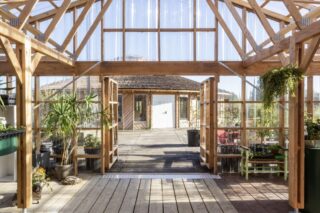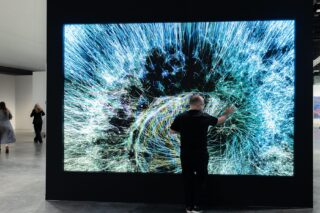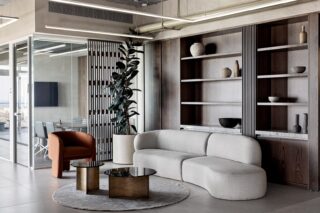Under a sparkling horizon and 160 meters off the shores of Kuta Beach in Bali, Indonesia, a new 2,500-square-meter floating structure remains currently in the design phase. The architectural studio behind the design of the Marine Research Center, Solus4 has come up with a new typology for stationary in-water projects reached by boat, to withstand any natural phenomenon such as typhoons and big waves.
“We are, at the moment, having a series of meetings with different entities in order to get it built,” LEED AP Alfonso Lopez, design principal and co-owner of Solus4, told ArchiExpo e-Magazine. “It is a very complex project. Although not so large when it comes to scale, it has many challenges in order to get it built and become a profitable structure. This project started as an idea and it is encouraging to see how much appeal it has had since it became public.”
The center responded to the guidelines of a design competition co-sponsored by Arquitectum and Universitas Pelita Harapa in 2010, whose focus on the need for tsunami research recalled the 2004 havoc in the Indian Ocean. Solus4 seized the opportunity to study and interpret the structure of tsunami waves, leading to the Marine Research Center.

Courtesy of Tangram
Absorbing Nature
Lopez and project manager AIA LEED AP Mariana Vaida offer the necessary experience in order to render this structure as sustainable as possible. The plan calls for energy-efficient materials such as large glass-based panels that are transparent and opaque with embedded PV cells. Its proximity to the shore of Kuta Beach gives the structure its power requirements through the tidal current generators and water requirements are provided through rainwater collection and seawater conversion. The seawater located at the deepest level is circulated through the structure allowing the cooling and temperature control of the whole center.
Linear Patterns
During the design process, the team was inspired by the wave dynamics and the resulting patterns of a tsunami. The research center depicts the linear patterns from the waves, resulting in a brilliant piece of art that seems to be one with the ebbs and tide of the sea.
Seemingly right out of a science-fiction novel, the Marine Research Center adapts to its natural aquatic surroundings, allowing visitors and scientists to have a spectacular view through its glass exteriors. It consists of research labs, bedrooms for visiting professors and scientists, a seawater pool, an aquatic garden library and an auditorium distributed over a grand surface divided below and over the sea surface level.
Legendary
The center will be an iconic contemporary site to visit in the future as people from all walks of life visit the beautiful island of Bali. Their purpose runs beyond tourism, they come looking for inspiration through the study of creating a balance between land and ocean.


![Arch2O-Marine-Research-13[1]](http://dev-archive-emag.archiexpo.com/wp-content/uploads/sites/7/2016/07/Arch2O-Marine-Research-131.jpg)










